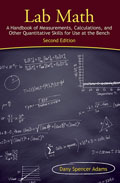Statistics explained
Tabling Advice
How to Make Truly Terrible Tables: A Tutorial by David Streiner Part I: Be Too Accurate No, your eyes are not deceiving you; the title of the blog has changed slightly, from “How to Make Truly Terrible Graphs” to “How to Make Truly Terrible Tables.” This reflects the fact that it is possible to […]
Streiner does it again
David Streiner, my favorite statistician (if that’s not obvious from other posts here), has been writing short pieces (that I wish I could have written) about important but often misunderstood or forgotten statistical topics. I just read one, about sample size and power, that makes these two uncomfortable topics very clear. In particular, he […]
Effect and substance, not p
There is an excellent resource by Paul Ellis at: http://effectsizefaq.com where I just clicked on http://effectsizefaq.com/2010/05/30/how-do-researchers-confuse-statistical-with-substantive-significance/ This page talks about the problem with p-level being the be-all and end-all of way too many scientific studies. You might be aware that there is discussion about this in the scientific literature. (I think statisticians deserve prizes for […]
Graphing advice
How to Make Truly Terrible Graphs: A Tutorial David L. Streiner, special guest contributor and co-author of excellent statistics texts Part 2: Pie in the Sky To really screw up visual presentations, use a pie chart. Even better, use two or more of them. In my last blog, we learned the first step in making […]
Fabulous correlations
Who would have thought that you can predict the number of drivers killed in collisions by monitoring US crude oil imports from Norway. Actually, shockingly, this one of those correlation vs causation things. Check out the excellent collection kept by Tyler Vigen at: Spurious correlations (thanks to Dr. David Streiner for alerting us to […]
Graphing advice
How to Make Truly Terrible Graphs: A Tutorial David L. Streiner, special guest contributor and co-author of excellent statistics texts Part 1 – Introduction In 1968, when I was writing up my doctoral thesis, I needed to make some graphs showing how the different groups changed over time under various conditions. There were no […]
Bayes explained very nicely
http://meandering-through-mathematics.blogspot.com/2011/05/bayesian-theory.html I found this link to be a very helpful description of Bayes’ theorem.
Great Stats Blog Site
A recent post on the Simply Statistics blog takes on a sort-of-hot topic in statistics: what errors actually matter, and how are they best quantified and reported when you are using statistics to infer something about a population. Best, in this case, means best at making accurate predictions. The two camps are the Frequentists and the […]
